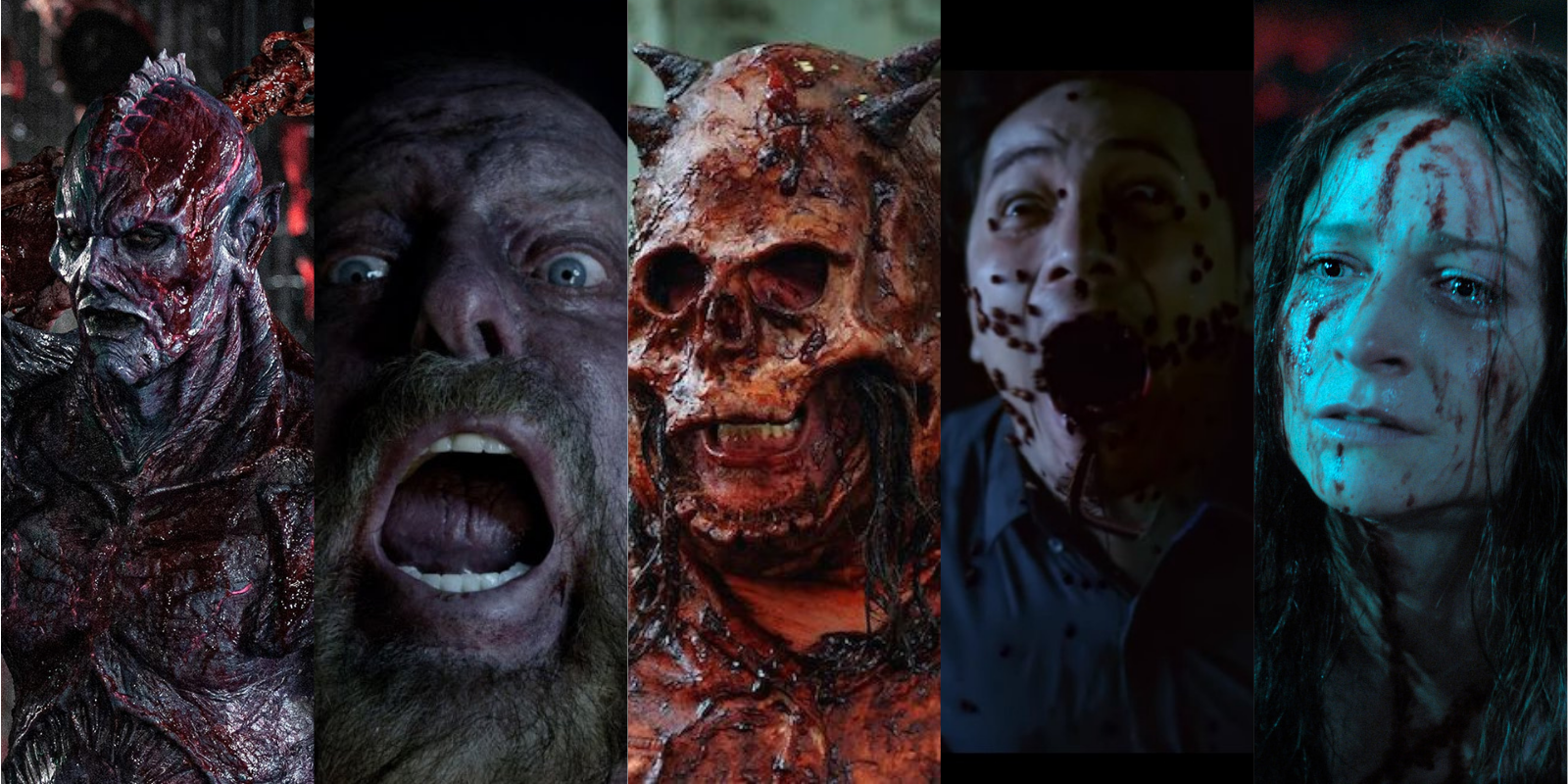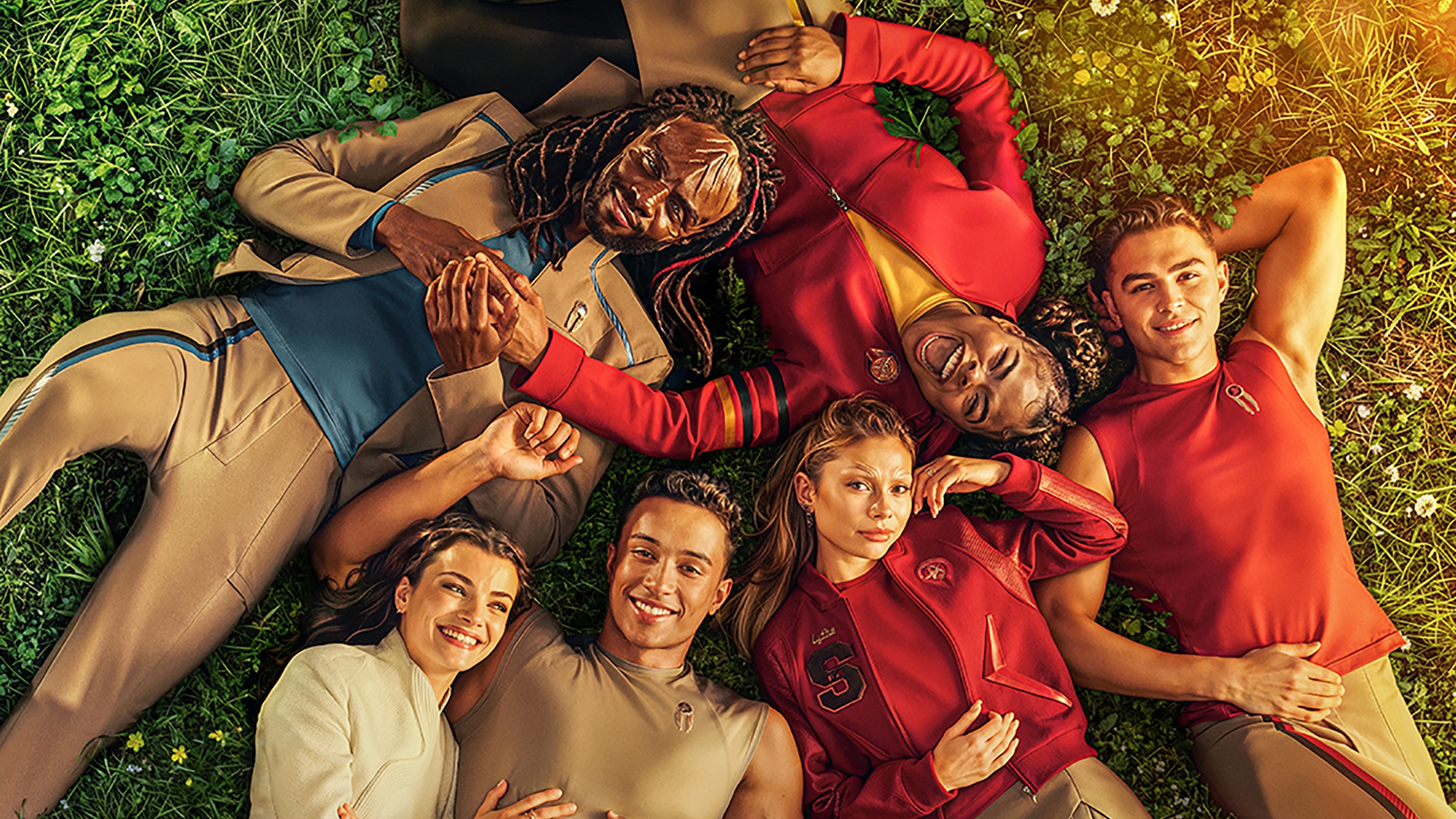The best horror movies of 2021 so far
It's already been a bountiful year in horror and we've got your perfect list to catch up on if you've fallen behind.

In 2021, the biggest story embraced by horror movie lovers has been the reopening of megaplex theaters and the return of theatrical blockbusters. The Conjuring: The Devil Made Me Do It always benefitted from an HBO Max default, but the likes of Spiral: From The Book Of Saw and Candyman could once again market themselves as upcoming releases. Nature, as they say, is healing—but as horror fans know, the genre thrived even under pandemic conditions. Last October? Streamers overloaded audiences with Halloween haunters where some 40+ brand spankin’ new horror films flooded Shudder, Netflix, Hulu, the works.
Horror never skipped a beat despite COVID-19’s decimation of Hollywood, and it’s those very titles that I hope don’t get ignored now since the Conjurverse is back en vogue.
So far this year, a slew of undersung horror titles have proven that indie releases are still the bedrock of the horror genre. Between fraternity slashers with furious messages, intergalactic hunky boys, and uniquely religious frights, 2021 brought incredible sights before Michael Myers’ return was even set in stone. There’s so much to look forward to as a horror fan, but also tons to catch up on. Let’s take a look at those horror movies this year that you might not have even heard about or at least deserve a bump to the front of your watch lists.
Slaxx
The killer pants movie? Yes, the killer pants movie! I'm no stranger to the obscurities of possessed objects throughout horror history, and Slaxx fits into canon like a catalog's hottest new centerfold item. It's far better in its first two-thirds than finale as the tone veers into an unexpectedly jarring subplot, but when the denim's dance of death remains in focus, there's confidence like a skilled catwalk strut. Practical effects flaunt dungaree representation as the slacks stalk freely while consumerism satires paint an outlet sale blood red. As echoed, "There are some structural issues presented when a jazzier, bloodier first two acts give way to a dourer, at-odds-with-itself third. However, [Elza Kephart] still sustains the ridiculous mania of murderous trousers to an approvable degree." I can confirm Slaxx is worth your prioritization since zanier comedic beats stylize looks that kill.
The Queen Of Black Magic
I’ve said it seventeen thousand times already, but I’ll repeat it—Indonesia has become the most exciting exporter of horror. Kimo Stamboel separates from “Mo Brothers” collaborator Timo Tjahjanto, but directs a script by equal superstar Joko Anwar for The Queen Of Black Magic. This reverent and layered tale splices ceremonial folklore with upsetting modern horror highlights. “We stan a queen whose merciless damnation is highlighted by beheadings, acid burns, and wriggly minions, as much as we appreciate Stamboel’s relentlessness once climaxes start to climb upwards.” Yes, we do, past me. I still think about countless sights worth a tremble, whether that’s an onslaught of insect attackers causing death or a woman’s obsession with image leading to “fat removal” without surgical oversight. Signed, present me.
The Block Island Sound
"The Block Island Sound takes the idea of "siren songs," mixes in possession paranoia, and adds a spoonful of grief to make the whole thing that much more of a waterlogged nightmare." There's been an uptick in coastal horror as of late between titles like The Beach House and Sacrifice, with The Block Island Sound leaving the competition in its wake. It calls to the sea's folkloric mysteries, pitting man versus nature as a disquieting investigation into7. what swirls just below the calmest surfaces. It's never an outright aquatic creature feature but gets creepy, crawly, and contemplative as townsfolk are beckoned to the water's shimmer like guppies to baited hooks—one of those poetry-in-motion horror tales that stinks of saltwater.
Skull
One of the year's most notable riffs on "The Shape" comes from Brazil, and it's Skull (or Skull: The Mask). Expect your average "Nazis experiment with an artifact and unwittingly unleash an all-powerful entity" horror story. The Mask of Anhangá possesses a random vessel in modern times, and the ancient god Tahawantinsupay begins slashing his way through sinners, saints, and everyone in between. The gore is out of bounds and cranks the dial on midnighter mutilation even if mythology gets left behind—sometimes you need that ridiculous body counter with bazookas, flamethrowers, and unlimited killshots. Skull becomes the solution very quickly, without apology.
The latest updates, reviews and unmissable series to watch and more!
Gaia
What do you get when the Clickers from The Last Of Us sprout from the fertile soil of environmental horror? You get my favorite midnighter out of this year's Sundance, set in South Africa's Tsitsikamma forest. Gaia sows the seeds of Mother Earth's revenge after years of humanity's pollution and devastation, as a healthy injection of colorful body horror overtakes those who inhale microscopic spores. "Jaco Bouwer commands a confident vision slathered in mud, conscious of diminishing resources, and inspired to strike molecular retribution," marks my Sundance words. It's a visual feast that sprouts a garden of unsettling sights, all beautiful in their weaponization.
Sator
In a just world, Sator would get the same amount of acclaim as Relic or The Dark And The Wicked. Jordan Graham’s passion project has been described by many as “Krisha meets The Blair Witch,” but strip away any ideas of being scared senseless. Horrors emerge from isolated forest atmospheres and the immense burden of grief. Graham writes, scores, edits, produces, gaffs—everything—as a grandmother’s words about this watchful entity named “Sator” become something malevolent that Gabriel Nicholson’s Adam desperately seeks to avoid. “Burning a slow wick towards a vile end, the film’s calling card becomes dreadful sorrow,” I once typed. The best examples of indie cinema are always personal and sincere, both of which propel Sator’s most pressing unknown fears.
Censor
Is something that premiered at Sundance then acquired by IFC Midnight truly underseen? I hope not, but Prano Bailey-Bond’s Censor fits independent criteria. What starts as a borderline historical recounting of “Video Nasty” editors turns into a commentary on the consequences of prudish erasures before becoming its own nasty midnighter with a WandaVision bend. There’s this overflowing sensation of mania that seeps into the overall narrative as in Knife + Heart or Berberian Sound Studio, the latter of which forms more substantial parallels. A censor finds herself the subject of some trashy horror flick centered around a missing person, as the regulator’s vision of reality and celluloid blur into a searing breakout for Bailey-Bond. Calling back to my Sundance recap, “It’s a witty dissection of fearmongering and how officiants are so quick to create imaginary creatures worth horror squeals to distract from actual, everyday devils we’d rather ignore.”
Initiation
The navigation of independent horror releases is a risky endurance test, but titles like John Berardo’s Initiation are the reward. Another toxic greek life bubble, another slasher hacking their way through dudebros with despicable traditions. Initiation separates itself as accusations of assault and a campus’ cover-up becomes far more than just another excuse to say the phrase “topical themes.” Performances carry a little more power than typical low-budget slashers, and the kills are a—how can I not—cut above. Berardo succeeds in executing an equal balance between message and massacre where other comparable titles typically only service the gore-gonzo sleaze aspect. As I previously wrote, “Initiation has no right to be as poignant and proficient in addressing once-embraced dangers around alcoholic bedpost rocking while still assuring the unknowns of narrative intrigue stay out of sight.”
The Vigil
When people stress the importance of representation in horror, movies like The Vigil showcase how the genre only benefits from exploring race or religion in its multifaceted universality. Keith Thomas represents Jewishness in horror alongside recent features like 2018’s The Golem or 2015’s JeruZalem, but even so, channels greater religious emphasis down to Hasidic consultants. What could be another middle-of-the-night ghost story is revitalized as Shomers and Maziks lean on specific rituals that assert freshness into an otherwise familiar genre architecture. It’s spooky! It’s nimble! It’s also, as put in my review, “a flickering flame that guides down an endlessly dim hallway of haunted house imitators.”
Psycho Goreman
As mentioned, 2021 is the year of hunky boys and Steven Kostanski's Psycho Goreman (aka PG: Psycho Goreman). The Astron-6 alumnus creates another practical showcase with do-it-yourself appeal, as an R-rated Power Rangers vibe overtakes some schmaltzy Harry And The Hendersons 80s family comedy satire. Psycho Goreman is summoned to Earth as a little girl's best friend via gemstone entrapment, and long story short? Bodies melt, children morph into brain creatures, and so much warehouse gore strings together one of the year's funniest, darkest, and most heartwarming adolescent tales. Don't worry; it's no "PG" affair. As a glimpse from my full review, "Psycho Goreman is a Saturday morning non-cartoon with sensational savagery and live-action Heavy Metal influences."
Candyman
“Candyman revives the terrifying urban legend for a new generation of fans, but never loses sight of the past.” Shania nails precisely how Nia DaCosta’s Candyman lured me in like a bee to honeycomb sweets because this isn’t a straight remake—it’s a rebootquel that understands the opportunities granted upon DaCosta, Jordan Peele’s production company, and horror legacies. Deaths are chop house gory but only as an accentuation between the film’s scathing cultural commentary that addresses not only Candyman in modern times, but the eras of public perception between releases. It’s about race, haunted neighborhoods, and reinvention that’s tethered to its bloodline inspirations—DaCosta holds a mirror to the past and reflects every soul-crushing terror onto the future, blindsiding viewers with a frightful condemnation of society's cyclical sins.
The Night House
What if I told you David Bruckner’s The Night House started as a Hellraiser pitch? One that focused on the intimacy of its characters, and that’s from whence The Night House burst? Rebecca Hall plays stonily guarded and depressively broken so well, as the film becomes a stand-out as mental health horror storytelling. Scenes grow chillier and graver as the darkness descends upon a widow via tragedy, as Bruckner’s visuals stun through architectural illusions that bring to life a home’s inherited demons. It’s more slow-burn—nothing from the James Wan camp—but is rapturously vulnerable and forthcoming about stigmatic conversations that unlock so much dreadful meaning in an unflinchingly honest dance with the follies of “getting better.”
Matt Donato is a Rotten Tomatoes approved film critic who stays up too late typing words for What To Watch, IGN, Paste, Bloody Disgusting, Fangoria and countless other publications. He is a member of Critics Choice and co-hosts a weekly livestream with Perri Nemiroff called the Merri Hour. You probably shouldn't feed him after midnight, just to be safe.


